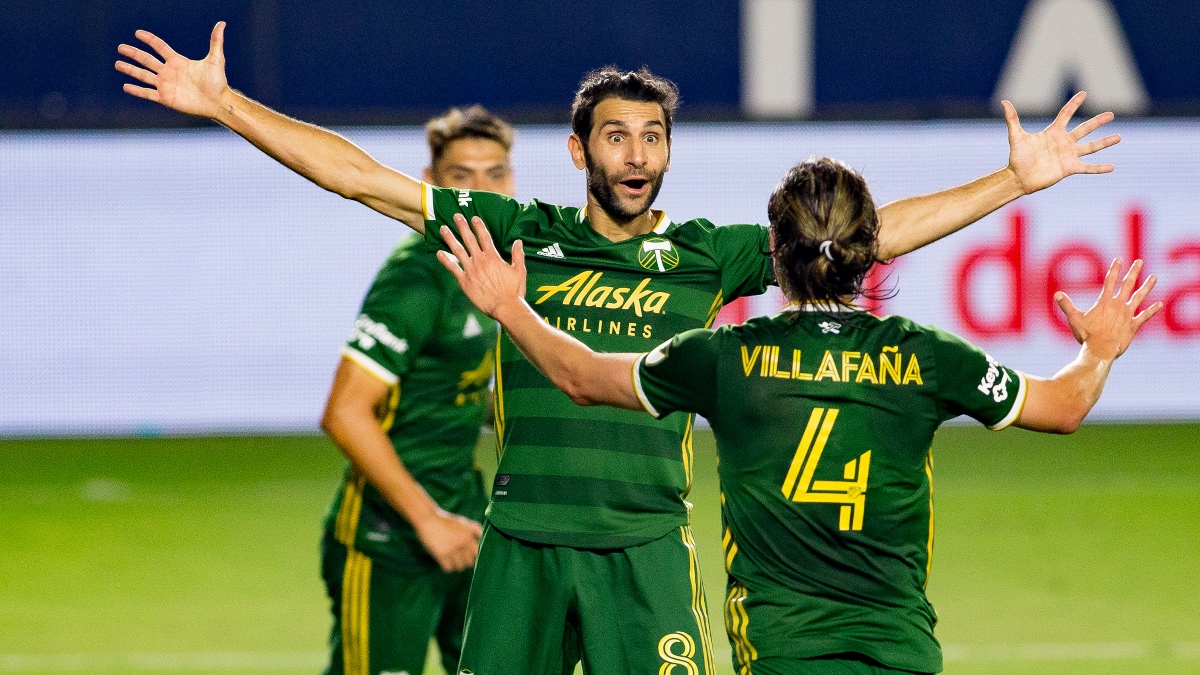
WE’RE GOING TO DISNEY WORLD! No, that is not your young child shouting in exclamation about a trip to the happiest place on Earth. Instead, its every professional sports league looking to make their return during this COVID pandemic. The National Basketball Association has an agreed upon plan to play there in late July and the MLB has considered it in their many proposals about returning. But it will be Major League Soccer that will first test this “bubble theory” out. The MLS released plans for what it is dubbing the “MLS Is Back” tournament. The name is… well… an interesting choice to say the least. But even more interesting (in a good way) is the tournament set-up itself. A world-cup style format, Disneyworld in Orlando is welcoming all 26 MLS franchises to its premises to compete in a world-cup style tournament. If everything comes together correctly, the MLS may have struck a serious victory here, in terms of entertainment, relevancy and what it could mean for the league going forward.
The tournament is set to begin July 8th and will be the first major American sports league to return since all leagues went on hiatus in March. That will be two days before Hockey, nearly a full month before the NBA is set to resume their season and who the hell knows what baseball is doing. The point is that there is a lot of free airspace for the MLS to gain national relevancy, something that it has fought for since the league’s inception. People have been on the hunt for live sports to consume since the start of quarantine, I mean they’re watching the goddamn Korean Baseball League for Pete’s sake. The MLS is prepared to give it to them. From the opener featuring Orlando City vs Inter Miami on July 8th thru to July 25th when the round of 16 begins, there will be 39 group-stage games. With television deals with FOX and ESPN, the MLS will be featured live nationally and without the specter of the more established leagues hogging the national spotlight. The eyes of the country will be on the MLS.
Which is where the entertainment value comes into play. America is going to watch. But are they going to keep watching? This is where the change to a world cup style could prove to be a wise move. It naturally breeds drama, as all teams are fighting for two spots to make it into the single elimination playoff round and will be forced to face-off twice in the group stage. More importantly it’s also a format that a large chunk of the United States is familiar with. 11.8 million Americans watched the Men’s World Cup final in 2018, compared to the 447,000 who tuned in to the MLS cup final in 2019.
Unlike the MLS soccer season, there is a clear format and (most importantly) a clear winner. In most soccer leagues in the world the team that wins the most points over the course of the season is the team that wins the league. In the select few others, there is a playoff after the regular season where the winner is determined through elimination. Well… the MLS has both. The Supporters Shield is handed to the team that accumulates the most points (i.e. wins + ties), the MLS cup is awarded to the team that wins the playoffs. While it is in most people’s view that the MLS cup is the more important trophy, it has led to some debate whether that should be the case. In the end, it just makes everything a little more confusing. By using the world cup format in its return, the MLS (and spectators) can avoid confusion about what teams are fighting for.
But just because fans are familiar with how everything is laid out, doesn’t mean they’ll love the on-field product. That is where the MLS can turn some heads. In recent years, the quality of play has been on an upward trajectory. While still the 20th ranked league in the world in terms of skill, the league has grown in value, allowing for more expensive player acquisitions. While salary structures in the world of soccer are complex both at home and abroad, it is now a normal sight to see MLS teams spending eight-digit transfer fees to bring in quality foreign talent. This has resulted in a better viewership experience leaguewide. Los Angeles Football Club, Atlanta United, New York Red Bulls, New York Football Club, San Jose Earthquakes and Football Club Dallas have all earned high marks for their unique and modern offensive approaches. Even teams without the most clear-cut styles have filled their teams with high end players, teams such as the Seattle Sounders, Portland Timbers, Toronto Football Club and the Los Angeles Galaxy have star players on their squads. While there are still some lower quality teams that play a slow and blocky defense that had plagued the MLS in its early years, there is now a pool of talent that adds a dynamism to the league. Players such as Carlos Vela, Josef Martinez, Nicolas Lodeiro and Diego Valeri bring a special brand of soccer that could wow new viewers if given the opportunity.
If this new tournament is the type of success that MLS decision makers hope it is, it could be here to stay. The league is still quite young compared to other domestic leagues, which means it does not have the same type of conservative resistance to change that pervades other organizations. The MLS still doesn’t believe it has found the right formula to maximize domestic American soccer, as evidenced by recent playoff tweaks, new out-of-season trophies and an ever-evolving salary structure. While the latest change to single elimination playoffs brought a welcome shortening to the postseason, the other changes have been a mixed bag. None more so than the MLS’s continued persistence to partner with its Mexican peer, Liga MX.
Liga MX has two things the MLS desperately wants, high viewership and a high level of domestic play. Those same rankings I referenced earlier pegged Liga MX as the 10th best league in the world, mainly due to the strength of the league as a whole. The top-level teams in the MLS compare favorably on paper to top level teams in Mexico, but that is not the case when you compare the dregs of each league. Teams in the MLS like FC Cincinnati, Nashville FC and the Vancouver Whitecaps really drag down the overall quality of the league. Fivethirtyeight.com’s SPI team rating has the Liga MX’s worst team, Puebla, much closer ranked to a mid-tier MLS team. Games in Liga MX don’t slow to a snail’s pace as much in Mexico due to the higher overall quality of teams involved, whereas in the U.S. some teams are forced to defend for their lives just to get positive results. The MLS has a hope that increased competition with their rivals across the border could potentially lead to an increased level of play back home.
The other main draw is how popular Liga MX is. Not just in its home country of Mexico where soccer is king, but in the United States as well. The Liga MX final between Club America and Monterrey brought in 3.3 million US(!) viewers in 2019, more than six times as many people that had tuned in for the MLS cup final. Those are numbers the MLS desperately wishes it had and has tried multiple ways to their own numbers up.
The CONCACAF Champions League, Campeones Cup, friendlies and other competitions have all yielded less than desirable results. There are multiple reasons why this is the case. Friendlies aren’t competitive, Campeones cup is a one-off game where the teams change annually, and the Champion’s league is spread out over an entire year. There is a rumor circulating about a merger between the leagues in the future, but the optics of that seem far-fetched, to say the least. The happy medium between these small clashes and a full merger could be similar to what the MLS is doing right now. A high number of teams, playing a high density of games in one city every year in a world cup style tournament. If there was the right type of stakes at the end, this could be advantageous for both sides. One hand there is increased viewership for the MLS, on the other there is a further opening of U.S. media markets to Liga MX. Rivalries could spawn, fans would mix, and USA vs Mexico could be the overarching theme that pervades the entire tournament. It could be a win for all sides involved.
The “MLS Is Back” tournament is not only the best available option for American soccer to return from the COVID crisis but could open the door for future opportunities as well. The format mixes high intensity entertainment with a shortened schedule, making an ideal viewing experience for fans. If the experiment goes well, it could also open doors for the MLS going forward in both domestic and international markets. This tournament could change how the MLS is viewed and structured going forward.



